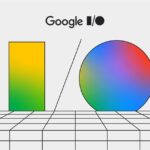
Google has returned to the tablet market officially. After hinting about it a year ago, the company has finally unveiled the $499 Pixel Tablet, which will start shipping on June 20th and is now available for presale starting today, May 10. The Google Pixel Tablet was created to be useful in your hand and at home around the clock. The most recent Android features, our Google Tensor G2 chip, and our enduring Pixel design were used in its construction.
The tablet is the ideal entertainment companion thanks to its beautiful 11-inch display and four built-in speakers for clear audio. With its vibrant hues (Porcelain, Hazel, and Rose) and rounded corners, the Pixel Tablet looks and feels fantastic. Additionally, our exclusive nano-ceramic coating gives the aluminium enclosure a tactile finish that is comfortable to hold.
Since Google is once again delivering tablets in 2023, it is evident that something has changed. The Pixel Tablet is built from the ground up to excel at the tasks that people normally perform with tablets: at-home gaming or watching movies. But it is not speculating on how computing will develop in the future.
![]()
The Pixel Tablet has a rather neutral appearance. It boasts a matte back, an 11-inch LCD display with a 16:10 aspect ratio and 2560 x 1600 pixels, and even bezels all around. White, dark green and light pink are the available hues; the dark green variant has a black bezel. The Pixel Tablet includes an aluminium frame with a nanotexture coating, similar to what Google did with the Pixel 5 smartphone, even though it appears to be plastic from a distance.
The Tensor G2 CPU used in the new Pixel Fold, Pixel 7A, and the Pixel 7 and 7 Pro models unveiled last year are also present in the Pixel Tablet. It comes with either 128GB or 256GB of storage and 8GB of RAM. Google claims that the battery can support up to 12 hours of continuous video streaming between charges. If you don’t have the dock with you, there is also a USB-C connector for wired charging. However, it’s only available in Wi-Fi-only configurations; there are no 5G or LTE options here, which serves as another evidence that Google anticipates most users never taking the tablet beyond the home.
The tablet is equipped with two cameras, three microphones for video calls, and four speakers. A second eight-megapixel front camera is positioned in the top bezel when holding the tablet in landscape configuration, where it should be, and an eight-megapixel rear camera is located in the tablet’s upper-right corner on the back. The power button has a fingerprint scanner to facilitate login and biometric authentication.
![]()
Currently running Android 13, the Pixel Tablet will later this year receive an update to Android 14. (The company guarantees three years of OS updates and five years of security.) Anyone who owns a Pixel phone is already familiar with the software, and Google boasts that more than 50 of its own apps have been upgraded to match the larger display on the Pixel Tablet.
The Pixel Tablet’s apps don’t have many productivity capabilities, despite the fact that you may split the screen between two programs at once. More than Google appears to be interested in at the moment, Samsung, Apple, and even OnePlus are making their tablets far more conducive to working on them. However, it will show all of your preferred streaming apps in full-screen mode.
And that’s essentially the whole point of the Pixel Tablet: it’s a tablet made for the purposes that people currently use tablets the most. The lack of adequately optimized apps has long been a gripe against Android tablets in general, and despite Google’s efforts on its own first-party apps, the Pixel Tablet probably won’t fix that issue. However, if all you want to do is relax on your couch and watch the most recent Succession episode, you probably won’t mind that the Slack app appears ridiculous on the Pixel Tablet.
![]()
In its efforts to create a tablet, Google spent years attempting to predict the direction of computing. To this end, it designed inventive keyboard cases and experimented with a variety of operating systems in an effort to create a device that is as versatile and powerful in terms of creativity as a laptop. With the Pixel Tablet, it is now attempting a more straightforward strategy, and it anticipates many people will be interested in it.
You can accomplish much more thanks to the tablet’s larger screen and AI-powered features. The finest Pixel gadget for editing images with features like Magic Eraser and Photo Unblur is the Pixel Tablet. You can utilize two apps simultaneously on the screen thanks to the split screen function. On the Pixel Tablet, you can use Assistant voice typing, which is nearly three times faster than traditional typing, to make writing emails a breeze as you’re dragging a photo from Google Photos into Gmail.















